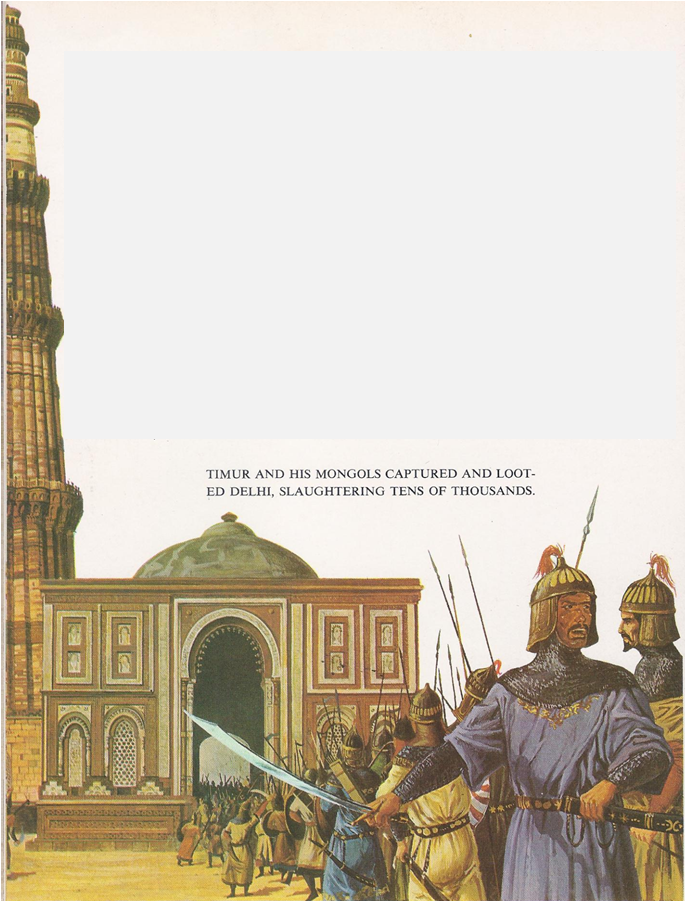THE name “Mogul” comes from the Arabic word for “Mongol.” Babur, the founder of the Mogul dynasty, was probably descended from both Timur and the mightiest of all Mongol conquerors, Genghis Khan. His early story was much like that of Genghis. Born a minor prince in what is now Soviet Turkistan, he was driven from his throne while still a child. He spent years wandering about with a few hundred ragged, half-starved followers. In 1504, he captured Kabul and began to dream of conquering the richer lands south of the Khyber Pass. In 1519, he made a start by seizing …
Read More »Tag Archives: Sind
The Coming of Islam A.D. 711 – 1526
IN 711‚ when other Moslem forces were invading distant Spain, Arab soldiers fought their way to the mouth of the Indus River and captured the area called Sind. There they stopped. Nearly three centuries passed before Moslems again menaced India. In 998, a Turk named Mahmud, the amir of Ghazni in Afghanistan, burst through the Khyber Pass with an army of Turkish horsemen to sweep across the Punjab in the first of seventeen raids. Not even the savage, pagan Huns had been as bloodthirsty as these civilized sons of Islam. They hated the Hindus with a special hate. Believing in …
Read More »
